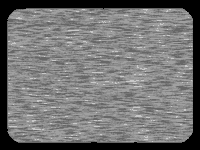Different Forms of Fan Fiction
Excerpted entirely from "Ten Ways to Rewrite a Television Show" from Textual Poachers: Television Fans &
Participatory Culture by Henry Jenkins, p162-177 (with my additional comments clearly marked).
1. Recontextualization: Fans often write short vignettes ("missing scenes") which fill in the gaps in the broadcast material and provide additional explanations for the character's conduct; these stories focus on off-screen actions and discussions that motivate perplexing on-screen behaviour.
2. Expanding the Series Timeline: The primary texts often provide hints or suggestions about the characters' backgrounds not fully explored within the episodes. Fan writers take such tantalizing tidbits as openings for their own stories, writing about events preceding the series' opening.
3. Refocalization: While much of fan fiction still centers on the series protagonists, some writers shift attention away from the programs' central figures and onto secondary characters ... who receive limited screen time.
**One example of this sort of fan story is Kitchen Full of Knives by Katja, which takes place in the Alias universe, and has been reposted
(with permission) here.
Summary: She has been living as Francie Calfo for months now. She has had to push Allison Doren out of her life. She can’t, after all, be Francie
if she is Allison. Sometimes she wonders which of them she really killed.
4. Moral Realignment: Perhaps the most extreme form of refocalization, some fan stories invert or question the moral universe of the primary text, taking the villains and transforming them into the protagonists of their own narratives.
5. Genre Shifting: If ... genre represents a cluster of interpretive strategies as much as it constitutes a set of textual features, fans often choose to read the series within alternative generic traditions. Minimally, fan stories shift the balance between plot action and characterization, placing primary emphasis upon moments that define character relationships rather than using such moments as background or motivation for the dominant plot.
**One example of this sort of fan story is Five Things That Never Happened to Lorelai Victoria Gilmore by Lina M., which takes place in the
Gilmore Girls universe and is available here.
Summary: Pretty self-explanatory (there is no official one), however the interest in regards to how this fits as an example is in how the focus of each
vignette centers on a moment that ends up defining the relationship between Lorelai and another character from the series.
6. Cross Overs: If genre-shifting reads the series through the filter of alternative generic traditions, "cross-over" stories blur the boundaries between different texts ... suggesting how familiar characters might function in radically different environments.
**Aside from Goodnight, Moon by Yahtzee (which is discussed in the essay proper), another example of this sort of fan story is Marked by Fyre,
which uses the similar placement and design of a character's tattoo to combine Buffy the Vampire Slayer with the Harry Potter book series. Also a
good example of #2 in this section, Expanding the Series Timeline, the story is available here.
Summary: Why did Giles go from devil-may-care rebel to top-notch Watcher? And is that significant ‘Dark Mark’ on his left forearm anything to do
with it?
7. Character Dislocation: An even more radical manipulation of generic boundaries occurs when characters are removed from their original situations and given alternative names and identities. The program characters provide a basis for these new protagonists, yet the fan-constructed figures differ dramatically from the broadcast counterparts ... [such as when] the characters are dislocated into various historical or mythic contexts.
8. Personalization: Fan writers also work to efface the gap that separates the realm of their own experiences and the fictional space of their favourite programs. "Mary Sue" stories, which fit idealized images of the writers as young, pretty, intelligent [characters into the fictional universes] ... constitute one of the most disputed subgenres of fan fiction. So strong is the fan taboo against such crude personalization that original female characters are often scrutinized for any signs of ["Sue"-ish] intent.
**There are even internet communities set up for the sole purpose of finding and eradicating (and/or mocking) "Sue"-ish characters, such as The Mary
Sue Report, a LiveJournal community that can be found here.
9. Emotional Intensification: Because fan reading practices place such importance on issues of character motivation and psychology, fans often emphasize moments of narrative crisis. Fans relish episodes where relationships are examined, especially those where characters respond in a caring fashion to … other major characters. … One genre of fan fiction, "Hurt-Comfort," centers almost entirely upon such moments, sometimes building on a crisis represented within the series proper … other times inventing situations where the characters experience vulnerability … Here, emotional or physical pain is the catharsis; these traumatic moments provoke a sense of renewal of the commitments between partners.
10. Eroticization: Fan writers, freed of the restraints of network censors, often want to explore the erotic dimensions of characters' lives. Their stories transform the relatively chaste, though often suggestive, world of popular television into an erogenous zone of sexual experimentation. Some stories simply realize the sexual subplots already signaled by the aired episodes ... Or [for example], in "Slash" fiction, the homosocial desires of series characters erupt into homoerotic passion.

back to essay

